Oculus gave the world the first look at its new prototype Crescent Bay today at the Oculus’ Connect conference (livestream), and I got the very first hands-on demo. Crescent Bay has a faster frame rate, 360-degree head tracking, and integrated headphones, plus it’s lighter.
Oculus also announced the new Oculus Platform coming to the Samsung VR, which brings VR to a large audience through mobile apps, web browsers, and a VR content discovery channel. You can read our full story on Oculus Platform here.
CEO Brendan Iribe called Crescent Bay as big of a step up from the DK2 as the DK2 was from the DK1. This still isn’t a consumer version, but it’s getting closer.
The Crescent Bay is not an official developer kit, but instead a “feature prototype” designed to show off the future of what Oculus is doing, similar to the pre-DK2 “Crystal Cove” prototype. The Crescent Bay likely won’t ship out to developers but will prepare them for what Oculus puts into the “DK3″ or whatever it calls its next developer kit, which VR makers will be able to buy and tinker with.
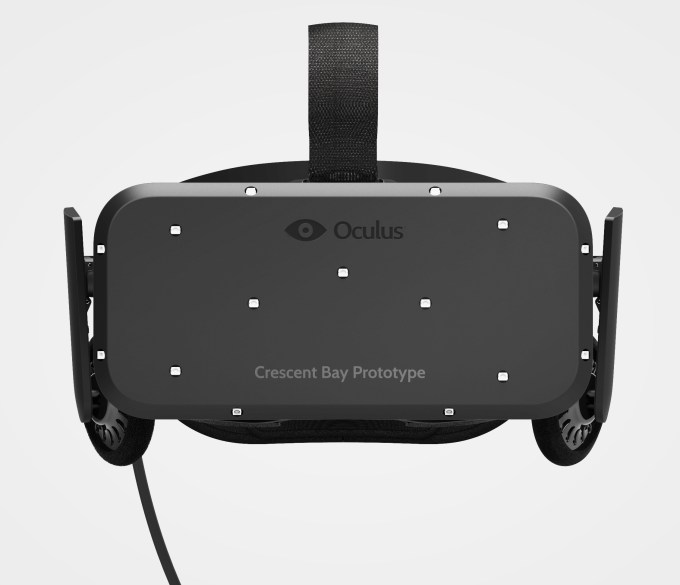
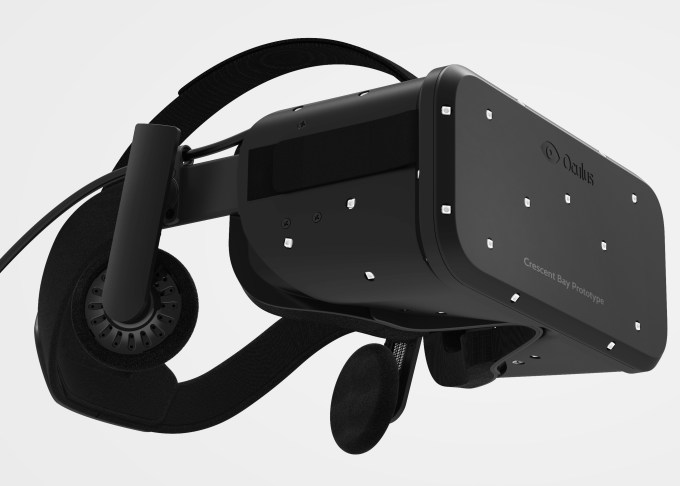
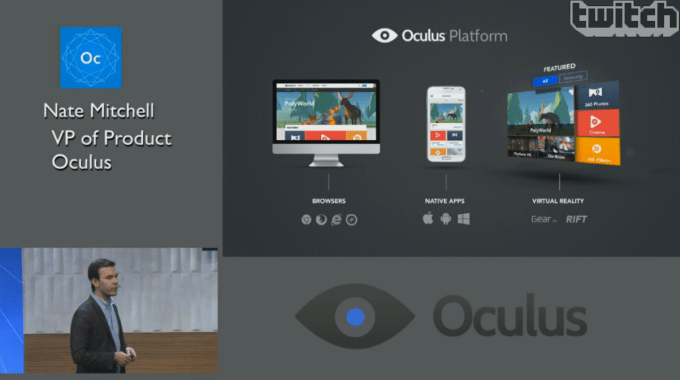
Thanks to the 360-degree head tracking powered by a camera on the back of the Crescent Bay, users will be be able spin around all the way so they don’t feel constricted, while previous Oculus headsets could tell if you facing all the way backwards. The expanded positional tracking volume and integrated high-quality headphones will make the sound of Oculus as immersive as the visuals. Oculus licensed RealSpace3D’s audio technology built at the University of Maryland. RealSpace3D allows for high-fidelity VR audio by combining “HRTF spatialization and integrated reverberation algorithms.”
Oculus also announced that it’s done a deal with game engine Unity to make Oculus support official for everyone on both the free and pro versions of Unity.
Update: Hands-On
By camping out, I just got the very first public demo of the Crescent Bay. Oculus wouldn’t allow any official photos or videos, but someone else still snapped a few and sent them to me. You can watch a short video clip of me trying it on, and here’s a description of how it felt.
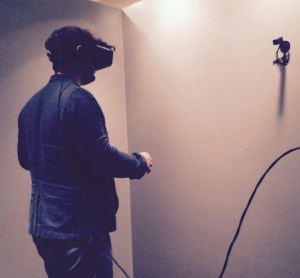 During the 10 minute demo, I hung out with a tyrannosaurus rex, perched on top of a skyscraper, stood by a fire with some woodland creatures in a polygonal field, floated over a SimCity, shrunk down to microscopic size to look at giant dust mite, and watched a SWAT team fight a giant battle mech.
During the 10 minute demo, I hung out with a tyrannosaurus rex, perched on top of a skyscraper, stood by a fire with some woodland creatures in a polygonal field, floated over a SimCity, shrunk down to microscopic size to look at giant dust mite, and watched a SWAT team fight a giant battle mech.
The headset is remarkably light, causing no neck strain . The goggle portion feels like mid-quality hollow plastic, though overall it feels pretty durable for its weight. The field of view is much wider than the seeing-through-binoculars feel of the Samsung Gear VR, but it still frames your vision a bit. There’s some space around the nose that let me see out the bottom of the Crescent Bay, which kept me from feeling fully transported.
The best part was how quick and accurate the motion tracking was. At one point in the demo, I was in a dressing room in front of a mirror with a floating mask mimicing my movements. No matter how fast I turned or spun around, I couldn’t detect any real latency in the mask. The motion tracking always kept up.
The way it does that is with an array of tiny LEDs layered over the outside of the Crescent Bay headset. Unlike the DK2 which just used LEDs on the front, there’s a back panel to the strap that goes around you head which holds LEDs that can also be tracked with a camera so Oculus knows when you turn all the way around.
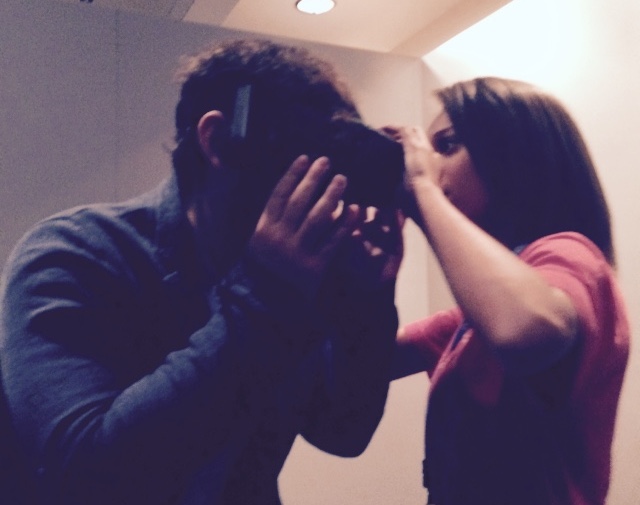
What felt most noticibly missing was a gamepad or controller for being able to move walk around or enter commands. This is what was rumored to launch today at Oculus Connect, but didn’t. But a source tells me that when they told an Oculus employee they wished the demo had a controller, they were told “it’s coming”.
Oculus Wants To Win PC and Mobile VR
Oculus CEO Brendan Iribe announced that over 100,000 Rift developer kits have shipped to over 130 countries. He said “If you love sci-fi, this is your holy grail. Today it is happening. Virtual reality is here. Just let that sink in. We thought about flying cars, maybe hover boards, and virtual reality. Now it’s here. Our mission is to transform gaming, entertainment, and how we interact…We’re really sprinting towards the consumer version.”
To do that, Oculus needed to nail “Presence” or feeling like you’re actually in the virtual world. That means nailing every component of a VR rig so that no step causes motion sickness. These components are tracking the motion of your head, CPU, GPU, display, photons, optics.
Iribe went on to explain that Oculus sees VR as dividing into two categories, and that it needs to win at both:
- PC-based: Where computers can drive the most immersive experiences.
“With positional tracking, high frame rates, low persistence, and strong GPUs, you can create unbelievable worlds, you can create believable worlds.”
- Mobile-based: Where affordability, accessibility, and mobility will bring VR to a mass audience.
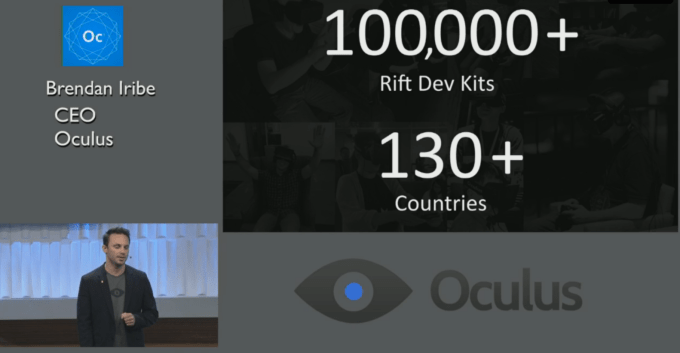
Last night, Oculus also announced it would open source all the technology around its DK1 developer kit on Github. This could help developers level up their own development, build components using Oculus’ designs, and even sell these products without having had to come up with them.
By creating official new hardware and software platforms, Oculus could help unify the fragmented VR industry which has been using unofficial hacks to make third-party peripherals works with the Rift. The announcements could convince developers that Oculus is a more stable platform to build on so they increase their investment and help it build VR experiences that mainstream customers will find interesting.
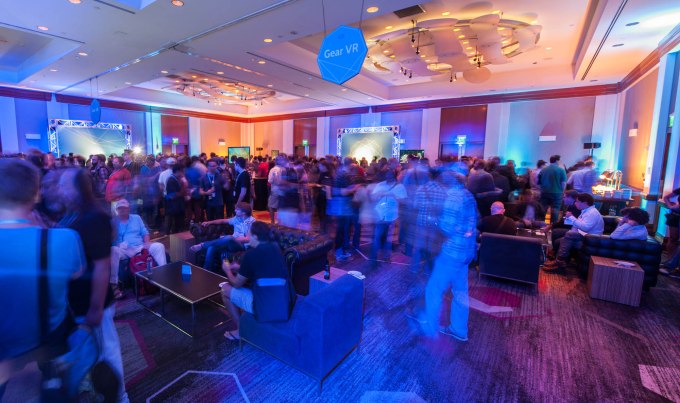
Coming off raising $2.5 million through Kickstarter and another $93.4 million from VCs, 2014 has been an epic year for Oculus. It took huge numbers of pre-orders for its DK2 developer kit before being acquired by Facebook in March for $2 billion. Despite a quick backlash from some developers and Kickstarter supporters for selling out, Oculus has largely reassured the VR community that having Facebook as a parent company makes it more of a reliable platform, not less.
Bigger developers began signing on, creating an ecosystem of peripherals and content experiences around the Rift. Most recently, the DK2 began shipping to developers and Oculus built a mobile VR rig for Samsung which lets you slip a Galaxy Note in to act as the headset’s screen.
Now we’ll get to see what developers will do with the new Oculus Crescent Bay headset and Platform.
No comments:
Post a Comment